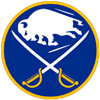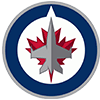Last week, we dived into a handful of pitchers with solid swinging strike rates but not necessarily a correspondingly solid ERA. This week, we'll tackle an even newer metric on the hitting side. You've probably heard of the term "barrels" or "barrel rate." MLB.com defines a barrel as a batted ball with each of the following characteristics:
Exit velocity = 98 mph
Launch angle = between 26 and 30 degrees
Then for each mph in velocity above 98 mph, the launch angle range extends a degree or more, so:
Velocity = 99 mph launch angle = between 25 and 31 degrees
Velocity = 100 mph launch angle = between 24 and 33
Velocity = 116 and above, launch angle = between 8 and 50 degrees
Simple, right?
Essentially if a hitter is credited with a barrel, it's because he crushed the ball. This week we will look at the metric barrels per plate appearance percentage. It's a simple calculation, but to illustrate, a hitter with 10 barrels in 100 plate appearances would be credited with a 10 Brls/PA percentage.
Listed below are 10 hitters among the league leaders in Brls/PA percentage from whom maybe we didn't necessarily expect to see this much power:
Matt Olson, 1B, OAK (12.8% Brls/PA %, .208/.303/.458)
After missing about six weeks with a hand injury, Olson has quickly made up for lost time, particularly in the power department with seven homers in 109 PA. He's also walked a respectable 10.1 percent of the time,
Last week, we dived into a handful of pitchers with solid swinging strike rates but not necessarily a correspondingly solid ERA. This week, we'll tackle an even newer metric on the hitting side. You've probably heard of the term "barrels" or "barrel rate." MLB.com defines a barrel as a batted ball with each of the following characteristics:
Exit velocity = 98 mph
Launch angle = between 26 and 30 degrees
Then for each mph in velocity above 98 mph, the launch angle range extends a degree or more, so:
Velocity = 99 mph launch angle = between 25 and 31 degrees
Velocity = 100 mph launch angle = between 24 and 33
Velocity = 116 and above, launch angle = between 8 and 50 degrees
Simple, right?
Essentially if a hitter is credited with a barrel, it's because he crushed the ball. This week we will look at the metric barrels per plate appearance percentage. It's a simple calculation, but to illustrate, a hitter with 10 barrels in 100 plate appearances would be credited with a 10 Brls/PA percentage.
Listed below are 10 hitters among the league leaders in Brls/PA percentage from whom maybe we didn't necessarily expect to see this much power:
Matt Olson, 1B, OAK (12.8% Brls/PA %, .208/.303/.458)
After missing about six weeks with a hand injury, Olson has quickly made up for lost time, particularly in the power department with seven homers in 109 PA. He's also walked a respectable 10.1 percent of the time, with his 28.4 K percentage and .224 BABIP conspiring to keep the BA near the Mendoza line. Olson also hit just .247 last year and .259 in 2017, so he's rather unlikely to be much more than a .250 hitter going forward. What's really interesting are his splits (Olson hits left-handed):
2018 vs. LHP: .251/.332/.369
2018 vs. RHP: .244/.336/.494
2019 vs. LHP: .259/.333/.630
2019 vs. RHP: .188/.291/.391
Imagine now if Olson is able to maintain his performance versus southpaws while improving his hitting against RHPs, closer to his 2018 level. What we do know is that the power is real. Now if he can improve enough to finish around .250, his final line could look something like .250/.350/.500.
Marcell Ozuna, OF, STL (11.3% Brls/PA %, .249/.324/.531)
An impending free agent, Ozuna regressed to a .280/.325/.433 slash last season with the Cardinals, a year removed from a breakout .312-37-124 season in 2017. This year has been really interesting. He's hitting just .249 thanks to a .248 BABIP, but when he does make contact, the results have been elite:
ISO by year:
2016 - .186
2017 - .236
2018 - .153
2019 - .282
So, will the average return to more in the .280-plus range? Probably. Ozuna's 9.7 BB percentage is a career-best, and even his 20.6 K percentage is below his career mark and below his MVP-level 2017 (21.2 percent). Ozuna's 52.9 percent hard hit rate ranks 10th in baseball, ahead of the likes of Cody Bellinger, Gary Sanchez and J.D. Martinez among many others. 52.8 percent of Ozuna's hits have gone for extra bases. I have to think at some point that some of his balls that don't leave the yard or roll to the wall are going to find holes in the defense. Let's say he finishes at .280 with similar power and plate discipline the rest of the way. That could mean a final line of .280/.355/.560. Strong production.
Franmil Reyes, OF, SD (11.1% Brls/PA %, .247/.293/.549)
I remember thinking Franchy Cordero was going to relegate Reyes to 4th/5th outfielder status, but Cordero has been either hurt or ineffective mostly in his MLB stints. Reyes, meanwhile, has 16 home runs in 198 PA while playing most every day and hitting second in recent games. Of course, the batting average isn't ideal, and he doesn't walk a lot (6.6 percent), but last year, Reyes put up a .218 ISO with the Padres and a .290 mark in Triple-A, so his current .302 mark isn't totally out of line. Now, the likelihood that a 34 HR/FB percentage continues is small, but Reyes' hard-hit rate is elite at 49.2 percent, he's hitting more fly balls this year, and it seems likely that a .250 BABIP will climb as the season progresses. Reyes put up BBs in the 8.5 to nine percent range in the minors before jumping to 14.8 percent in Triple-A, so it seems very possible that he'll improve his walk rate, find more holes with batted balls and perhaps lose some power. With that in mind, I'd guess his final line to be something in the .260/.310/.520 range. Not bad.
Howie Kendrick, OF, WAS (10.5% Brls/PA %, .324/.362/.581)
After recording just six barrels in 160 PA last year, Kendrick already has 16 in 152 PA this season, so he's obviously seeing the ball well right now. That he doesn't have a set position hasn't hurt his playing time too much, though the return this weekend of Matt Adams from the IL might. I have to think though that a guy with a .941 OPS for a team that ranks just ninth in the NL in runs probably should be in there most days, and Kendrick likely will be. The positive signs continue as you plow through his other metrics:
Year | BB% | K% | HardHit% |
2017 | 6.6% | 20.4% | 34.0% |
2018 | 3.1% | 18.1% | 44.4% |
2019 | 5.9% | 15.1% | 51.7% |
With Ryan Zimmermann likely to return this week as well, it's tough to see exactly how Kendrick will be deployed. He'll still see time at first, but the best path appears to be second base considering Brian Dozier is hitting just .223/.311/.386, though Dozier in his last 35 PA is hitting .323/.371/.516, making it unlikely he'll see the bench too often as the team looks to figure out what they have in him after an awful year plus two months of mediocre play.
Mitch Garver, C, MIN (10.4% Brls/PA %, .325/.417/.723)
Garver has Jason Castro and Willians Astudillo to contend with for catcher at-bats, but after a great first three games, Astudillo is hitting just .223/.248/.319 in his last 101 PA, so the pecking order is likely Garver, Castro (.967 OPS) and Astudillo with Astudillo also seeing time elsewhere on the diamond. Garver obviously has been a revelation, hitting nine homers in 96 PA after managing just seven in 335 PA last year. His previous high was 17 back in 2017, so imagining he's now a 25- to 30-homer guy is tough to do, but it's not impossible he'll finish with somewhere in that range. It's tough to know whether he's changed his approach at all, as we haven't seen any articles suggesting he has, but considering his barrel rate, exit velocity, launch angle and hard hit rate are all up this year, it's not out of the question that he's become a different hitter. Keep in mind also that Garver finished last year strong, hitting .293/.340/.474. He's not going to maintain his current rate, obviously (29 percent HR/FB rate), but I do like the jump in his flyball rate (50 percent vs. last year's 37.7 percent), and his 11.5 BB percentage is up over last year's 8.7 percent mark.
Renato Nunez, 3B, BAL (10.3% Brls/PA %, .250/.300/.514)
I'm not sure I buy this yet, but I'm enjoying it. Nunez seems like a pretty streaky hitter:
First 22 PA: .211/.318/.368
Next 83 PA: .333/.373/.577
Next 69 PA: .088/.101/.162 (yikes)
Most recent 53 PA: .383/.453/.979 (Wow!)
All that equates to the expected low BA, but also to 15 homers in 223 PA after he hit eight in 236 a year ago. Nunez was a pretty good prospect in the A's organization, and he once had a 33-homer season (32 in AAA, one with the A's) in 2017, but he'll probably never hit much more than .250, and the homers should come down, assuming his 20.8 percent HR/FB rate normalizes. That's not an abnormally high rate these days, though, and he's hitting fly balls at a solid 47.4 percent clip, so if Nunez can find his way to 500 at-bats, 30 to 35 home runs looks to be reasonable. It would certainly help as well to see his 5.4 BB percentage climb.
Brandon Dixon, 1B, DET (10.1% Brls/PA %, .302/.326/.558)
One of the advantages for tanking…err rebuilding teams is that they can give extended looks to a wide array of players, from unproven rookies to, in Dixon's case, 27-year-old career minor leaguers. Dixon has certainly delivered. After hitting .174 in Triple-A, of course he comes up and posts an .884 OPS, mostly as a 1B/DH. Of course, the red flags are plentiful, and they include:
3.4% BB%
38.4% K%
A combined 27.9% K% in the upper minors in more than 1,500 PA's
A .447 BABIP – possibility that's not sustainable
Given a full season, Dixon has 25 home run type upside, but the BA downside is significant. He's getting playing time in large part due to the slow starts of Jeimer Candelario and Dawel Lugo, so if either of those guys shows anything at some point, Dixon could find himself back on the bench or in Triple-A. I'm not all that optimistic for his success the rest of the way.
C.J. Cron, 1B, MIN (10.5% Brls/PA %, .275/.340/.534)
It seems like the Angels could sure use this guy back, though to be fair, he didn't really show much in parts of four years with them, batting just .262/.307/.449 before hitting 30 homers with the Rays last year and eventually winding up with the Twins for this season. Seems he's found a home. So, what's the key to his early success? Cron is obviously hitting the ball hard, but he's also walking at a 7.4 percent clip, which while far from elite, is a career high for him. His 25.9 K percent from last year is down to 22.3 percent in 2019, and his .259 ISO is up 19 points over last season. The Rays designated Cron for assignment last offseason rather than pay $5 million for a perceived one-tool first baseman, and given their payroll constraints, it made some sense, but either way, the Twins are grateful. Cron showed good power coming up through the Angels' system, so if the improved walk rate is for real, the 29-year-old would seem to have a decent chance at sustaining his hot start.
Avisail Garcia, OF, TB (10.3% Brls/PA %, .301/.363/.522)
Garcia has alternated mediocre and borderline-elite seasons the past four years, and he's looking at least somewhat elite again this season after hitting .330/.380/.506 in 2017. Perhaps last year's struggles can somewhat be attributed to a lingering hamstring injury, but he's back in business this year. It's easy to scream "regression" when you see his .351 BABIP and so-so 6.9 BB percentage, but Garcia also had a .392 BABIP in 2017, and he has a .331 career mark. Garcia's 0.26 career BB/K does bring with it an element of risk, but when he's hitting the ball, good things are happening, as evidenced by career-highs in launch angle, exit velocity, barrel rate and hard hit rate. If he can keep his BB percentage near its current levels or even improve it, Garcia has a chance to at least sustain something close to his current slash line.
Dansby Swanson, SS, ATL (9.5% Brls/PA %, .264/.320/.495)
Since a strong 26-game rookie stint back in 2016, Swanson hit a combined .235/.308/.359 the following two seasons, helping make the Shelby Miller trade a bit more palatable for Arizona fans. This year though, Swanson is hitting like the No. 1 overall raft pick that he was back in 2015. At the time, we wrote that Swanson had the chance to be a shortstop who hits for a high average with 15 to 20 home runs. Well, with 12 already this year, he's posed to blow that 15 to 20 projection out of the water. The average and OBP aren't great, and that's reflected in a declining BB percentage, which sits at 7.5 after topping out at 10.7 percent a couple years ago. With a reasonable 18.7 K percentage, Swanson makes good contact, and at 42 percent, he's improved his hard hit rate year-over-year by eight full percentage points. His barrels, launch angle and exit velocity are all up a decent amount, and when you consider his pedigree and the fact that he's still just 25, at least somewhat of a breakout shouldn't be a huge surprise. I don't see the power continuing at this level, but I think the average and OBP will trend up. Maybe he finishes at something around .280/.340/.490.





































